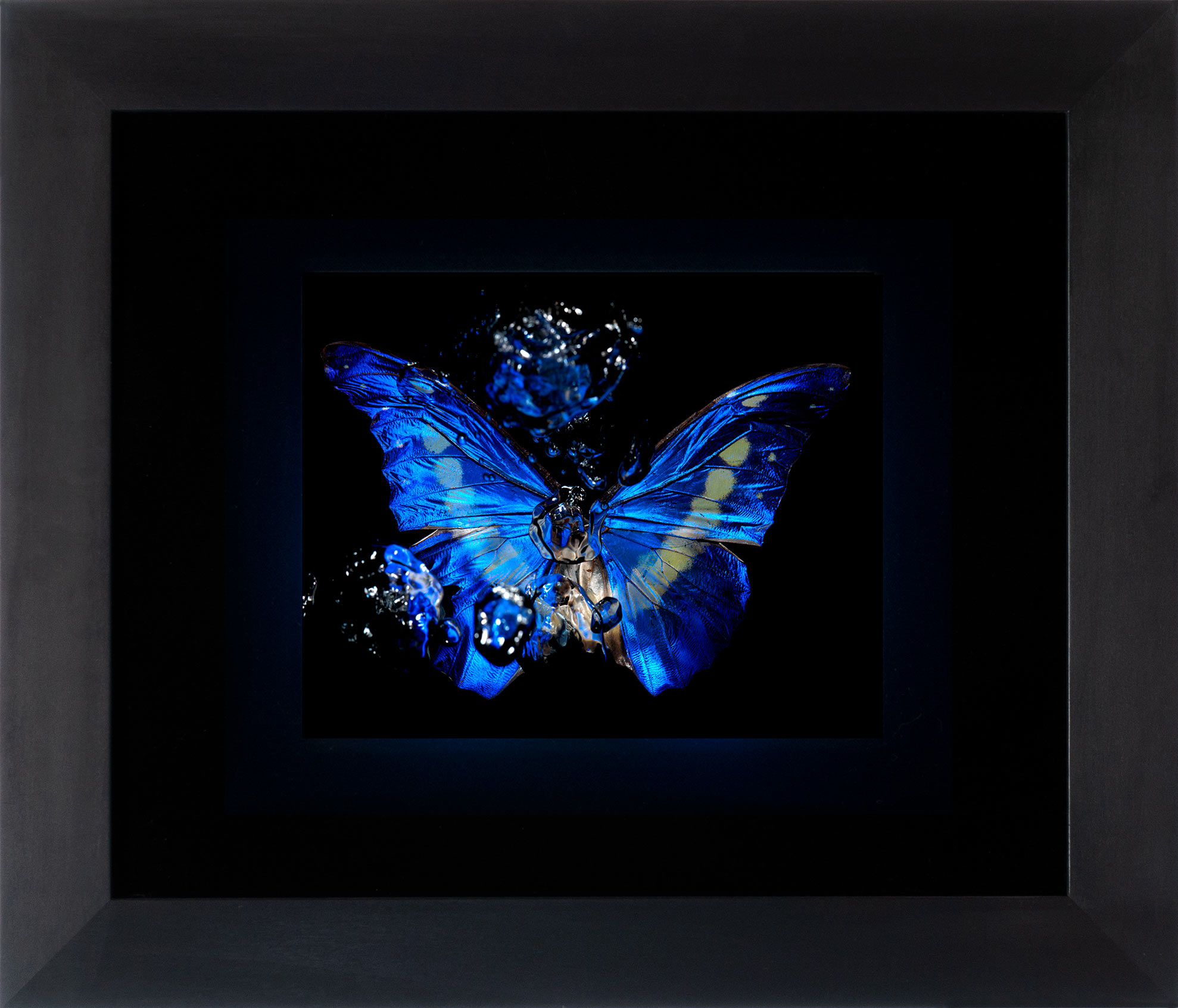Transparency of a dream illuminated a collection of blue Morpho butterfly artist proof artworks released
Author: Distil Ennui | Post Date: 22-07-2024To celebrate a new release of 15 unique artist proofs from the illuminated butterfly series, I re-visit the 2017 exhibition 'Death of the Dream' with this supporting text by Jessica McBride, curator & director of Dellasposa Gallery, London.
the richly illustrated catalogue can be downloaded here...
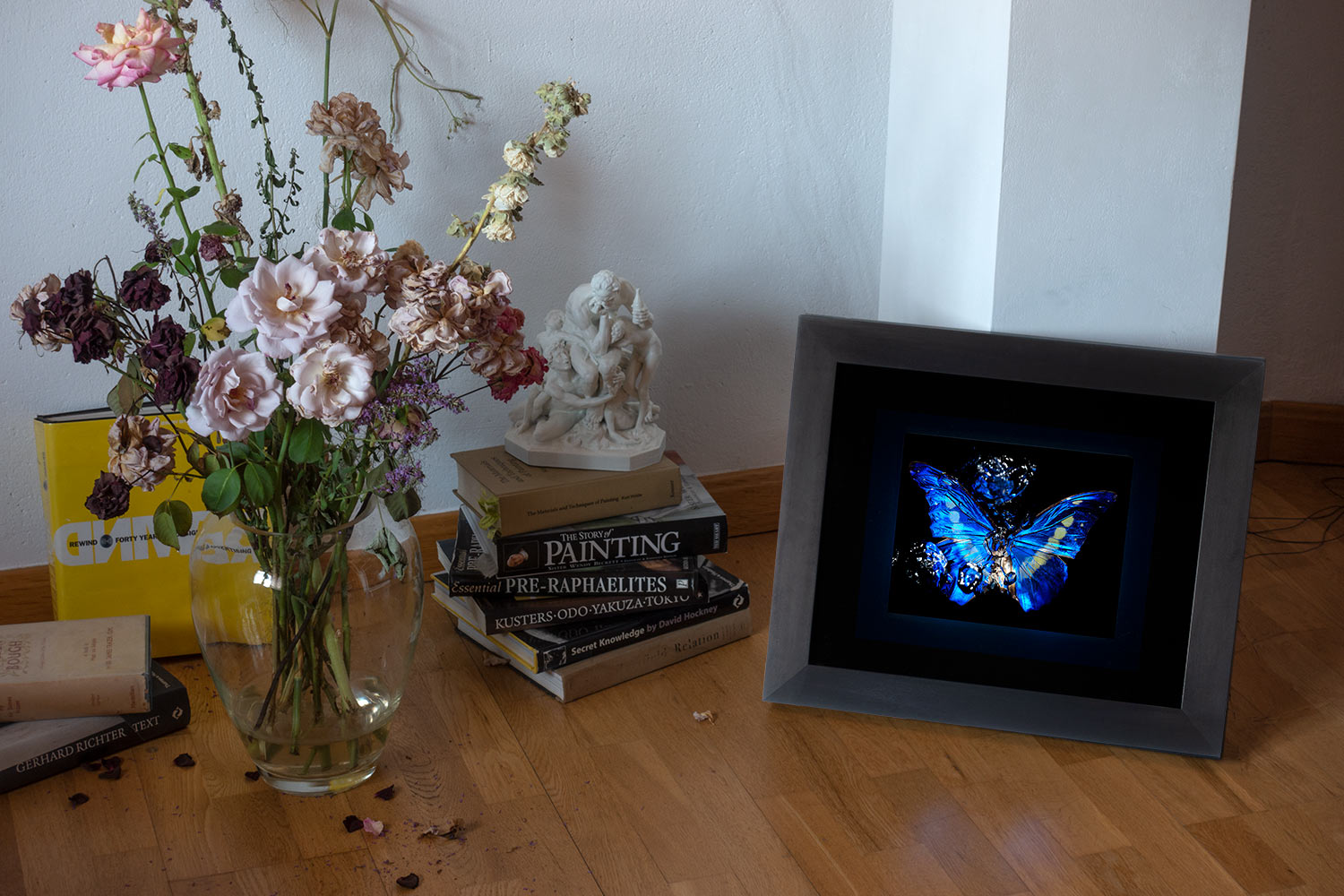
An iridescent chorus of butterflies appear as apparitions in Alexander James Hamilton’s spellbinding series Transparency of a dream. Continuing the artists interest with Lepidoptera, this series depicts several generations of butterflies delicately overlaying one another. Inevitably the celestial beauty of these Menelaus blue Morpho species have been catching the attention of collectors.
Multiple layers of reference are rife in Transparency of a dream, with allusions to the transmission of light passing through the photographic medium, the series serves as a meditation on the most important on-going themes of life and mortality within the artists oeuvre. An investigation of the later is of particular note, for the idea of photographing generations of butterflies was triggered by the artists discovery that his estranged father had passed away and had been buried 2 years before he had ever been made aware.
In Hamilton’s highly developed artistic lexicon, the presence of butterflies has come to signify the fleeting, beautiful and ultimately tragic nature of life and mortality. With a strong spiritual dimension inherent within the series, the association of the butterfly with religion and spirituality is a venerable on: symbolising love, regeneration, fortune, freedom, spirituality and death. In greek mythology, butterflies symbolise the souls of those who have passed away, whilst in the Christian tradition, the rebirth of a butterfly from its cocoon symbolises the miracle of resurrection.
Observing this delicate creature undergo an incredible metamorphosis offers great hope to Alexander. Just as the butterfly embraces both itself and the changing environment, the artist wonders whether we can accept the changes in our lives as abiding as butterflies do.
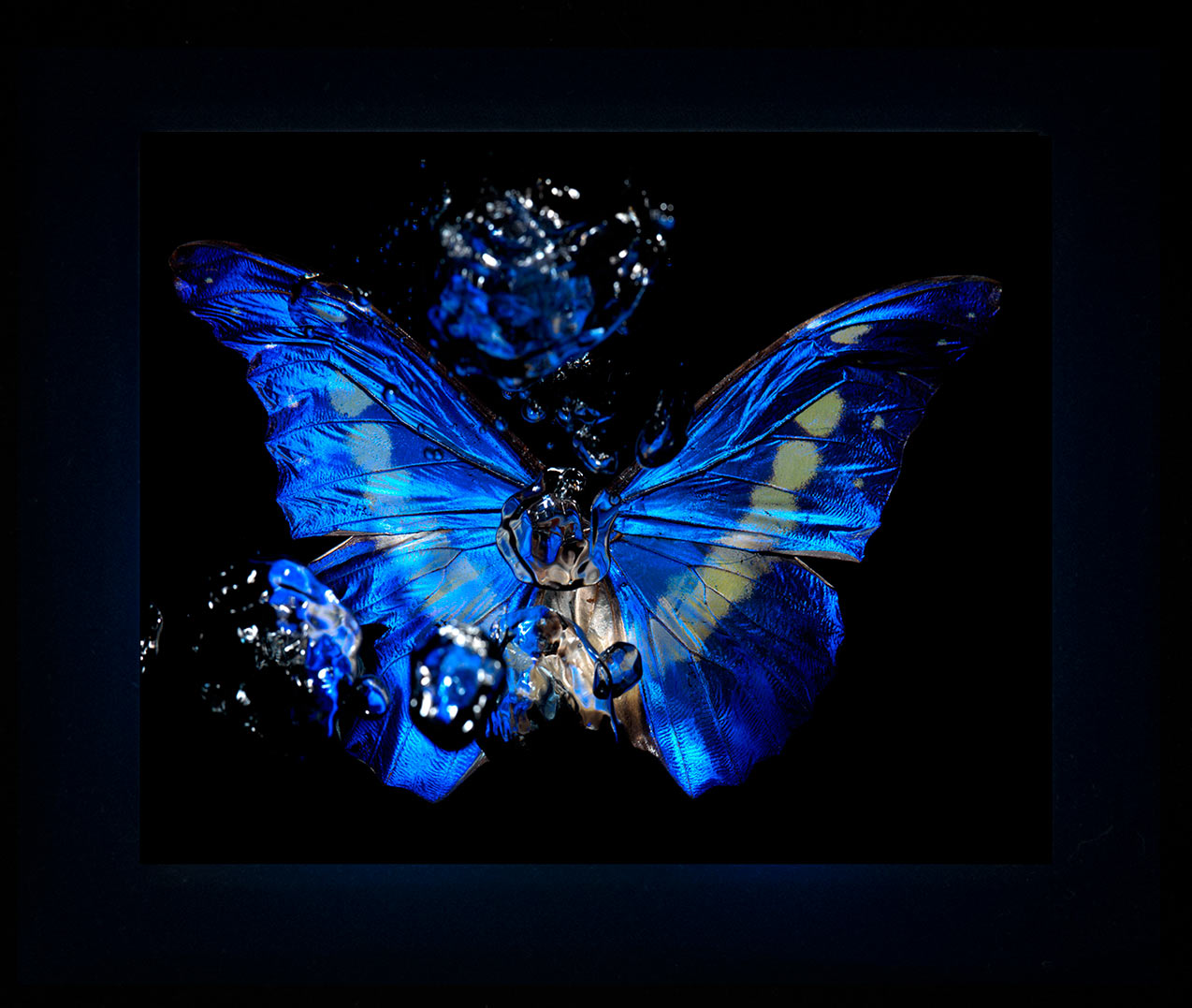
Transparency of a dream explores this subject in a hyper-real and painterly aesthetic created through the interaction of water’s mechanics to paint the subject in light. Moreover, through the introduction of water, Alexander draws upon water’s transient and destructive nature both as nurturer and destroyer, it exposes the fragility and temporality of our existence, having the power to cleanse and reinvent or to drown and disappear.
The work of Alexander James Hamilton involves more than photography, as his process operates in a dimension that presents profound difficulties: he has to bring these works into physical existence before it can even begin; effectively to create his canvas. Rather than capturing a moment in time spontaneously, Hamilton creates intricate sculptural compositions submerged in vast tanks of purified water as the object for his camera. The effect of light passing through, heightened against a darkened background, gives the resulting works a painterly appearance. In so far as his process of creation involves the use of photography, allusions to painting, performance and sculpture. Alexander James Hamilton’s work defies category.
In order to create this surreal sensation of butterfly descendants dancing with one another - something that never occurs in nature - Alexander had the idea of laying generation upon generation of butterflies within a single transparency. This required the artist to breed several generations of butterflies over a period of two years.
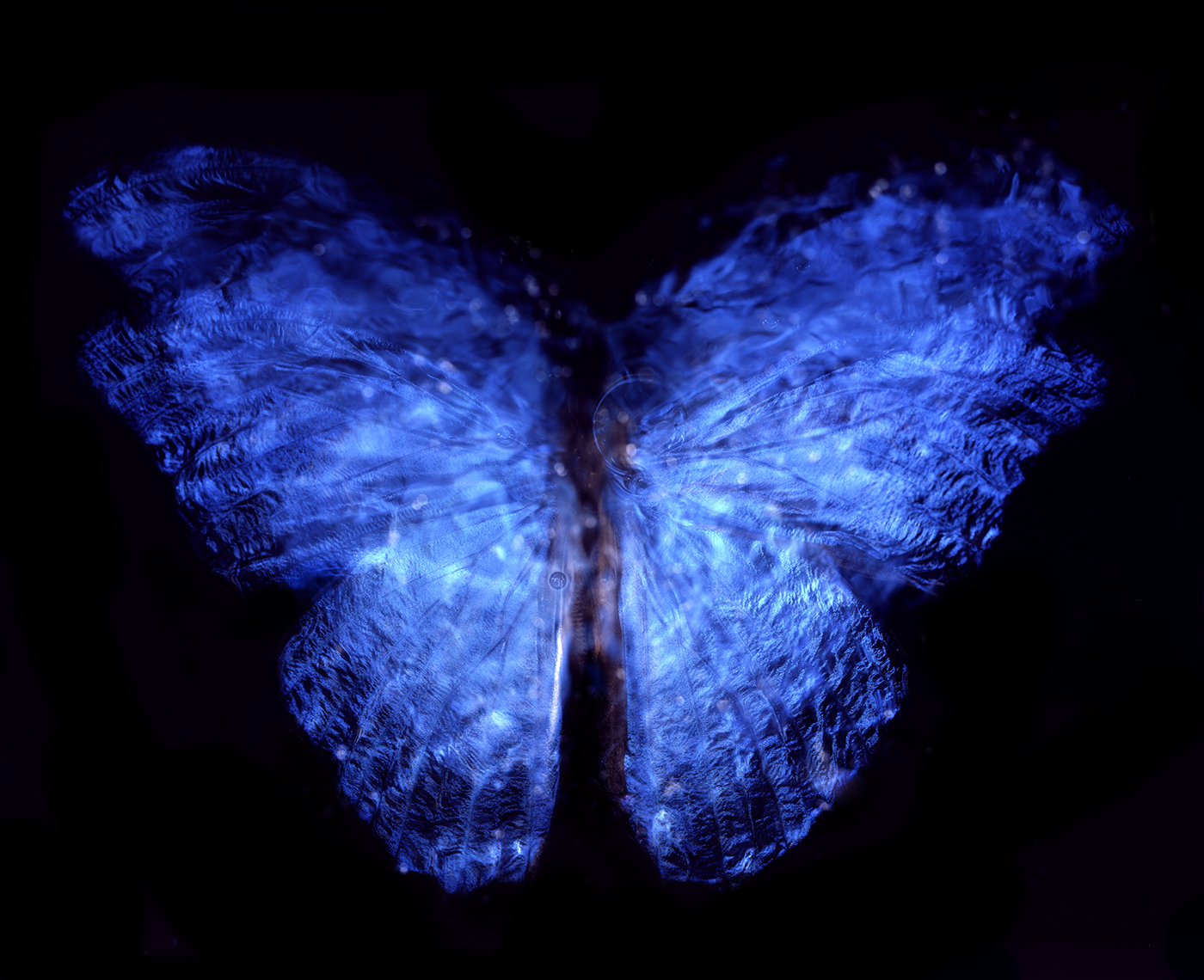
Starting with a parent butterfly specimen, he captured the original scene using a Sinar 8 by 10 inch plate camera, loaded with a single A4 sized sheet of film. In order to create the effect of the butterfly being suspended in a dreamlike state in the studio, he used a highly scientific process to place the butterfly in a temperature-controlled coma - something that occurs in the wild. He then places the butterfly in a specially devised tank of precisely cooled water. The butterflies are photographed underwater alive but in a coma; a state is a natural occurrence in nature for the south American species. Their heart rate stops completely; their respiratory system shuts down - they are completely unaware and unharmed in the process.
The subtle distortions of light and movement from the waters own wave energy creates a unique effect. The subjects appear to be floating in a void that neither interferes nor disrupts, conveying a serene and dreamlike sensation of the butterfly dancing as it moves with the motion of the water. The surface of the water can create a great deal of tension of movement; lighting is designed and directed specifically to catch these deviations in liquid mechanics. These movements catch and refract the light onto the subject, which is where the painterly quality of his work comes from: literally painting the subject in light.
A butterflies wing comprises thousands of light prisms. If a camera fires a flash directly at a butterfly, it simply reflects white light. However, as the water neutralises these prisms, this allows their full colour depth and luminosity to shine through. Once the initial parent butterflies had been photographed, the plates were annotated and stored until their offspring were born. Hamilton passed through four full cycles of breeding descendants of parent to child, to grand child and great grand child to complete the series.
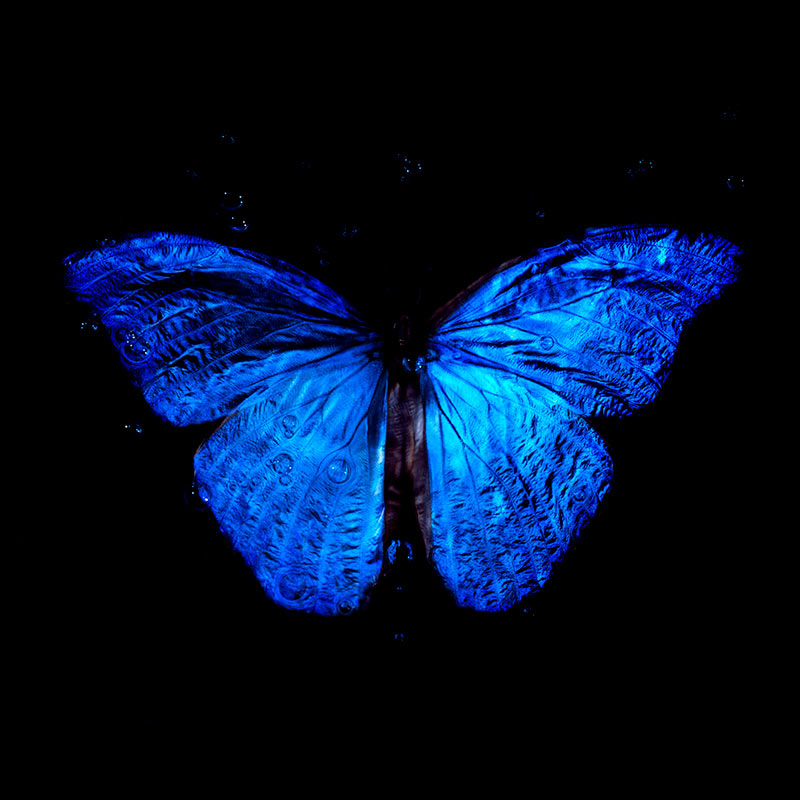
A self reflective undercurrent exists in Transparency of a dream by investigating the photographic medium itself. Presents works of breath-taking complexity and beauty in a sequence of singular unique works of art, the artist felt compelled to examine the reproducible capacity of photography in this series as a response to an ongoing debate of the aesthetic distinctions between photography and painting, and the intrinsic value of art.
Throughout his practice, Alexander James Hamilton has adhered to a doctrine of ‘in camera purity’, eschewing digital film and post production editing in favour of ‘the caustic chemicals to which you expose these delicate strips of celluloid - all of which are unrepeatable moments in time.’ Indeed, if post production were to be employed, the image would no longer be considered ‘unique’. Having redrawn the parameters of photography, the artist has brought the painterly quality of his work into the realms of traditional works of art. For this reason, each image within Transparency of a dream exists as only one unique piece of 8 x 10inch acetate and one single edition, 160x160cms print; along with two artist proofs each a different size and execution. Making each piece entirely unique with no editions ever to be released.
Representing the very apotheosis of the artist’s critique, Transparency of a dream is a poignant celebration of life. It is a series that invites mediation and contemplation, encouraging the viewer to focus on the extraordinary and fragile beauty of the natural world, the power of metamorphosis, and the ethereal sense of the passing of time.
